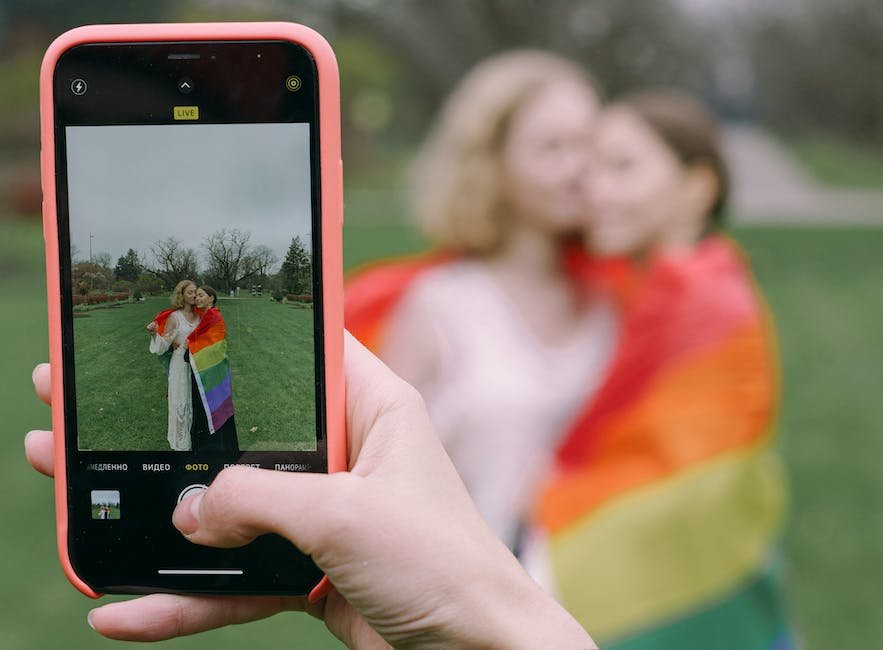Dancing gracefully on her hind legs, pirouetting with a twinkle in her eyes, Bella, a border collie extraordinaire, captivated the hearts of all who witnessed her enchanting performance. How did her human companion, Samantha, achieve such mastery over her canine companion? The secret, my fellow dog lovers, lies in the art of capturing behaviors—an advanced training technique that goes beyond basic commands, paving the way for extraordinary feats. In this article, we delve into the fascinating world of capturing behaviors, exploring its unprecedented potential to unlock a dog’s hidden talents and tap into the realm of pure canine genius. Join us as we embark on a journey of wonder, unraveling the mysteries behind this remarkable method that will forever reshape your perception of dog training.
Table of Contents
- Understanding the Basics of Capturing Behaviors
- Enhancing Communication through Positive Reinforcement
- Implementing Proactive Strategies for Successful Training
- Fine-tuning Capturing Techniques for Optimal Results
- Integrating Challenges and Rewards in Advanced Dog Training
- Q&A
- The Way Forward

Understanding the Basics of Capturing Behaviors
When it comes to capturing behaviors, it’s essential to have a solid understanding of the basics. So, let’s delve into the fundamental aspects of this intriguing field.
Observation: Observing the behavior you want to capture is the first step towards success. Take the time to closely watch and analyze the behavior in its natural environment. Pay attention to the subtle nuances and patterns that emerge, as they will be crucial in developing an effective capturing strategy.
Documentation: Once you’ve observed the behavior, it’s important to document your findings. This can be done through detailed notes, photographs, videos, or any other medium that helps you capture and preserve the behavior accurately. Documenting the behavior will allow you to review and analyze it later, ensuring you don’t miss any crucial details.
Breaking it down: Behavior can often be complex, consisting of multiple components. To capture it successfully, it’s beneficial to break it down into smaller, manageable parts. This way, you can focus on capturing each component individually before integrating them into a complete picture.
Being patient: Capturing behaviors requires patience. Some behaviors may take time to manifest, while others may require multiple attempts to record successfully. Remember, patience is key during this process, as it ensures you give yourself adequate time to capture the behavior accurately.
Now armed with the basics, you’re well on your way to mastering the art of capturing behaviors. Remember to be meticulous in your observation and documentation, break down complex behaviors, and always maintain patience throughout the process. Happy capturing!

Enhancing Communication through Positive Reinforcement
When it comes to effective communication, positive reinforcement can be a powerful tool. By focusing on rewarding and recognizing desired behaviors, we can create an environment that encourages open and honest dialogue. This approach acknowledges the strengths and contributions of individuals, fostering a sense of trust and goodwill.
Here are some ways we can enhance communication through positive reinforcement:
- Show appreciation: Take the time to acknowledge and appreciate the efforts of others. A simple thank you or word of encouragement can go a long way in fostering positive communication.
- Provide constructive feedback: When giving feedback, focus on specific examples and offer suggestions for improvement. By highlighting areas of growth rather than dwelling on mistakes, you can create an atmosphere where individuals feel comfortable expressing their thoughts and ideas.
- Encourage collaboration: Foster teamwork and collaboration by creating opportunities for individuals to work together towards a common goal. By emphasizing the benefits of shared ideas and diverse perspectives, you can enhance communication and problem-solving skills within a group.
By embracing positive reinforcement and incorporating it into our communication practices, we can create an environment that encourages active listening, respect, and empathy. This approach not only strengthens professional relationships but also promotes a positive and productive work culture.

Implementing Proactive Strategies for Successful Training
In order to ensure a successful training program, it is imperative to implement proactive strategies that help maximize productivity and engagement. By taking a proactive approach, organizations can create a positive learning environment that fosters growth and development.
1. Clearly define objectives: One of the key proactive strategies for successful training is to clearly define the objectives. This involves outlining the specific goals and outcomes you want to achieve through the training program. Clearly communicating these objectives to participants will help them understand what is expected of them and enable them to focus their efforts.
2. Foster a collaborative learning environment: Another proactive strategy is to foster a collaborative learning environment. Encouraging participants to work together, share knowledge, and engage in group discussions can enhance the learning experience. This can be done through structured group activities, online forums, or peer-to-peer mentoring.
3. Provide ongoing support and feedback: Offering ongoing support and feedback is crucial for the success of a training program. Regular check-ins with participants, providing resources and tools, and offering constructive feedback can help individuals stay motivated and continuously improve their skills.
By implementing these proactive strategies, organizations can set their training programs up for success. Creating a structured and engaging learning environment will not only enhance the overall experience but also contribute to the development and growth of individuals.

Fine-tuning Capturing Techniques for Optimal Results
Capturing stunning photographs is an art that requires constant fine-tuning of techniques to achieve optimal results. Here are some valuable tips to enhance your photography skills and bring out the best in every shot:
1. Experiment with Perspectives: Explore different angles and perspectives to add depth and uniqueness to your photos. By getting low to the ground or shooting from a higher viewpoint, you can transform an ordinary scene into an extraordinary one.
2. Master the Rule of Thirds: Use the rule of thirds to compose visually pleasing images. Imagine dividing your frame into nine equal parts with two horizontal and two vertical lines. Place your subject or important elements along these lines or at their intersections to create a well-balanced composition.
3. Utilize Natural Lighting: Lighting plays a crucial role in photography. Take advantage of natural light, which is soft and flattering, during the golden hours – early morning or late afternoon. Avoid harsh midday sun and consider using reflectors or diffusers to control and enhance the lighting conditions.
4. Pay Attention to Details: Focus on tiny details that make a big difference in your photographs. Whether it’s capturing the intricate patterns on a flower petal or the texture of a crumbling wall, highlighting these details can add texture and visual interest to your images.
Remember, capturing exceptional photographs requires practice and patience. By implementing these techniques and constantly fine-tuning your skills, you can elevate your photography to new heights and achieve the optimal results you desire.
Integrating Challenges and Rewards in Advanced Dog Training
When it comes to advanced dog training, incorporating challenges and rewards can be an effective way to enhance your dog’s skills and overall behavior. By presenting your furry friend with new and stimulating tasks, you not only keep their minds sharp and engaged but also foster a deeper bond between you and your canine companion.
To begin, introducing various challenges in your training sessions can help push your dog to their limits, encouraging them to think critically and problem-solve. These challenges could range from complex obedience exercises to interactive puzzles that require mental dexterity. By consistently providing your dog with new challenges to tackle, you’ll gradually expand their abilities and tap into their hidden potential.
Of course, it’s crucial to balance the challenges with rewards. Just like humans, dogs thrive on positive reinforcement. Incorporating rewards such as treats, praise, or playtime into your training sessions serves as a motivating factor for your furry friend to perform well and stay focused. By reinforcing desired behaviors, you not only encourage your dog to continue learning but also build their confidence and enthusiasm for training.
- Rotate the challenges: Regularly change the type, complexity, and environment of the challenges to prevent your dog from becoming bored or complacent.
- Use a clicker: The use of a clicker can be a powerful tool in advanced dog training. It allows for a precise marker of correct behavior and acts as a consistent signal for your dog to anticipate a reward.
- Gradually increase difficulty: As your dog masters a challenge, gradually increase the difficulty level to keep them challenged and motivated.
By integrating challenges and rewards into your advanced dog training sessions, you’re not only helping your dog reach their full potential but also creating an enjoyable and fulfilling experience for both of you.
Q&A
1. How does capturing behaviors differ from traditional dog training methods?
Capturing behaviors focuses on observing and rewarding the dog’s natural behaviors instead of using direct commands. It allows for more autonomy and develops a stronger bond between the dog and the trainer.
2. Can any dog be trained using the capturing behaviors technique?
Yes, capturing behaviors can be effective for training any breed or age of dog. It relies on the dog’s natural instincts, making it adaptable to different personalities and learning styles.
3. What are the benefits of using capturing behaviors in dog training?
Capturing behaviors encourages the dog’s enthusiasm and engagement, resulting in quicker learning and retention. It also stimulates their natural problem-solving abilities and boosts their confidence.
4. How do you start capturing behaviors with your dog?
Begin by observing your dog’s daily routines and interactions. Whenever you witness a desired behavior, immediately reward your dog with praise or treats. Gradually, they will associate the behavior with the positive reinforcement.
5. Can unwanted behaviors be corrected using capturing techniques?
While capturing behaviors focuses on reinforcing desired actions, unwanted behaviors can be managed by redirecting the dog’s attention to a desirable behavior. Over time, this positive reinforcement approach will help eliminate unwanted behaviors.
6. Is capturing behaviors a time-consuming training method?
Contrary to traditional obedience training, capturing behaviors can be seamlessly incorporated into everyday activities. It does require consistency and repetition, but it doesn’t demand dedicated training sessions, making it a practical approach for busy dog owners.
7. Are there any limitations to capturing behaviors?
Capturing behaviors may not be suitable for addressing complex commands or situations that require immediate responses. It’s important to combine capturing techniques with other training methods to ensure comprehensive obedience training.
8. Can capturing behaviors be used for competitive dog sports?
Absolutely! Capturing behaviors can enhance a dog’s performance in competitive sports. It allows trainers to capture and shape specific behaviors required for the sport, while still maintaining the dog’s natural enthusiasm and drive.
The Way Forward
As we conclude this captivating journey through the realm of canine behavior, we hope to have illuminated the path towards advanced dog training techniques in a way that sparks curiosity and ignites inspiration. The art of capturing behaviors is not a mere exercise in obedience, but rather an exquisite dance between human and hound, where mutual understanding and connection take center stage.
By embarking on this voyage, you have discovered how the power of positive reinforcement can create a symphony of extraordinary actions and unwavering loyalty from our four-legged companions. Like painters delicately stroking their canvases or maestros conducting a grand orchestra, capturing behaviors grants us the ability to mold and shape our canine friends into extraordinary beings.
But let us not forget the essence of this journey: empathy. For it is through empathy, understanding, and trust that we can establish an unbreakable bond with our furry friends. Just as they have opened their hearts to us, we must reciprocate by treating them with kindness, patience, and love.
As you leave the realms of this article, armed with the newfound knowledge of capturing behaviors, we urge you to continue exploring the boundless possibilities in the realm of dog training. Remember that every interaction with your pupper is an opportunity for growth, learning, and forging a beautiful companionship.
May your path be filled with wagging tails, slobbery kisses, and endless tail-wagging success. Continue to marvel at the wonders of canine behavior and channel your inner dog whisperer. With patience and dedication, who knows what miraculous feats you and your beloved furball can achieve?
So go forth, dear reader, and let the world witness the impeccable harmony that arises when humanity and canine seamlessly intertwine. For you hold within your hands the power to unlock the limitless potential residing within each and every pup. Together, let us embark on this whimsical adventure, forever united by the universal language of love.
As an affiliate, my content may feature links to products I personally use and recommend. By taking action, like subscribing or making a purchase, you’ll be supporting my work and fueling my taco cravings at the same time. Win-win, right?
Want to read more? Check out our Affiliate Disclosure page.